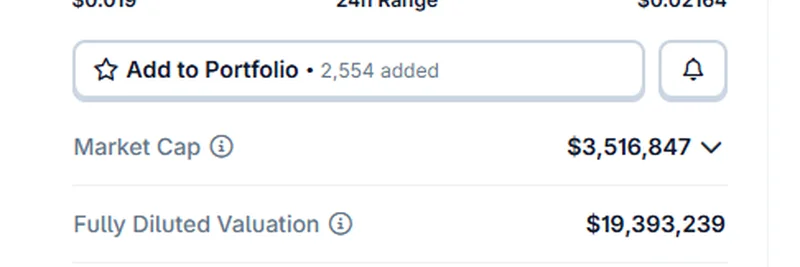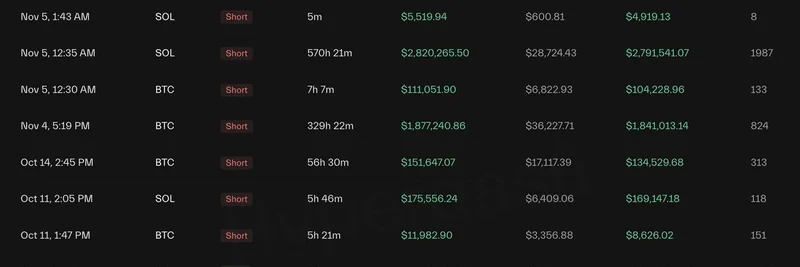If you've been keeping an eye on the decentralized finance (DeFi) world, you know that decentralized exchanges (DEXes) are where a lot of the action happens. These platforms let users trade cryptocurrencies peer-to-peer without intermediaries, right from their wallets. But a recent post from DefiLlama on X (formerly Twitter) shines a light on just how concentrated this space has become.
In their tweet, DefiLlama revealed that over 80% of all DEX fees—those small charges traders pay for swaps that often reward liquidity providers or fund protocol development—are going to just the top 10 protocols. Even more strikingly, last week's fees were mostly split between Uniswap and Hyperliquid Spot, showing a winner-takes-most dynamic at play.
Breaking Down the Chart
The stacked bar chart tracks the evolution of DEX fee market shares from September 2024 through July 2025. Each bar represents a month, with colors corresponding to different protocols. By August 11, 2025, the breakdown looked like this:
- Hyperliquid Spot Orderbook (green): 20.9% – This perpetuals and spot trading platform on its own blockchain has surged in popularity, offering low-latency orderbook trading that's appealing for high-frequency traders.
- Uniswap V2 (purple): 15.79% – The classic version of Ethereum's leading DEX, known for its simple automated market maker (AMM) model where liquidity pools set prices algorithmically.
- Uniswap V3 (orange): 12.1% – An upgraded iteration with concentrated liquidity, allowing providers to focus capital in specific price ranges for better efficiency.
- Meteora DLMM (light blue): 7.42% – A Solana-based DEX using a dynamic liquidity market maker model, optimizing for volatile assets.
- Meteora DAMM V2 (blue): 6.47% – Another variant from Meteora, emphasizing decentralized automated market making.
- PumpSwap (red): 6.08% – Tied to the popular meme token launchpad Pump.fun on Solana, this has become a go-to for quick, low-cost trades of viral tokens.
- Raydium AMM (yellow): 4.25% – Solana's pioneer DEX, integrating with Serum for hybrid AMM-orderbook trading.
- Uniswap V4 (pink): 4.07% – The latest Uniswap upgrade, introducing hooks for custom logic and better fee structures.
- Aerodrome Slipstream (lime green): 2.72% – A Base chain DEX focused on efficient swaps.
- PancakeSwap AMM V3 (dark green): 2.09% – Binance Smart Chain's (now BNB Chain) dominant DEX, popular for yield farming and low fees.
The "Others" category (gray) accounts for 18.12%, covering over 400 smaller protocols. This visual tells a story of rapid shifts: Early on, the bars are mostly gray and orange, but by mid-2025, greens and blues from newer players like Hyperliquid and Solana DEXes start stacking up higher.
Why This Matters for Meme Token Traders
For those of us in the meme token community, this concentration has big implications. Meme coins thrive on hype, speed, and low costs—qualities that Solana DEXes like PumpSwap, Raydium, and Meteora excel at. Pump.fun, for instance, has democratized meme launches, letting anyone create a token in minutes and trade it instantly. With PumpSwap grabbing over 6% of global DEX fees, it's clear that meme trading volume is a major driver here.
Uniswap's dominance on Ethereum, meanwhile, supports higher-value trades, including some blue-chip memes. But the overall trend highlights network effects: Liquidity begets more liquidity. Top DEXes offer tighter spreads (the difference between buy and sell prices) and less slippage (price changes during a trade), making them magnets for volume.
However, this isn't all rosy. Heavy reliance on a few protocols could pose risks—like potential exploits or regulatory scrutiny. It also underscores the challenge for up-and-coming DEXes to break in. On the flip side, it pushes innovation; look at how Solana's high throughput has carved out a niche against Ethereum's incumbents.
Community Reactions and Broader Context
The tweet sparked some buzz in replies. One user noted Hyperliquid feels more like a centralized exchange (CEX) due to its orderbook style, blurring DEX lines. Another highlighted the Pareto principle—80/20 rule—in action, where a minority drives the majority of results.
At Meme Insider, we're all about decoding these trends to help you navigate the wild world of meme tokens and blockchain tech. This data from DefiLlama reminds us that while DeFi promises decentralization, market forces often lead to centralization in practice. If you're trading memes, sticking to these top DEXes might give you the best experience, but always diversify and do your due diligence.
For more insights on DeFi protocols, meme launches, and the latest in crypto, check out our knowledge base or follow us on X. What's your favorite DEX for meme hunting? Drop a comment below!




